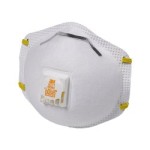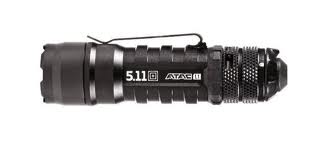It’s that time of year (at least in Minnesota) to be ordering seeds for planning this year’s garden. I think that gardening is a skillset that more people should have, but there is a learning curve. It’s more than just throwing a seed in the dirt and picking the produce. If you’re looking to make the leap from just prepping to homesteading, gardening is the perfect transition. Plus, with the ever growing cost of groceries, a garden is one way to reduce the cost of food.
We tried for a few years, but there is just too much shade in our yard for a garden, so we won’t be planting one this year. I’m by no means a master gardener, but I thought I would share some of the things I have learned along the way.
This article is geared more toward the beginner gardener, but if you pros have anything to offer, please do so in the comment section.
Heirloom vs. Hybrid
Hybrid vegetables are the result of cross-pollination of two compatible plant types. This is done to take advantage of the features of both plants, to increase yield, disease resistance, cold tolerance etc. Hybrid seeds are sterile, so you would have to purchase new seeds each season. Hybrid seeds are not GMO (Genetically Modified Organism), which are seeds that have had DNA of plants, animals or microorganisms spliced into the DNA of the plant. Heirloom plants are grown from heirloom seeds which are harvested from the heirloom plant at the end of the growing season. For more information, here is another article on Heirloom and Hybrid seeds.
Zone Hardiness Map
Before you decide on what kind of vegetables to grow, take a look at the USDA Plant Hardiness Zone Map.. Chances are that your local store will only have the seeds or plants that are hardy for your zone, but better safe than sorry.
Starting Seeds or Buying Plants
For beginner gardeners it is probably easier to purchase plants from a greenhouse that you trust. However, I think that starting seedlings is a skill set that every gardener should have. If you plan to start them from seed, the Soil Cube is something you might want to invest in. It is much better than the seedling pods that I have used in the past.
Traditional vs. Square Foot vs. Raised Bed
Traditional gardening is what most people think of; tilled soil and things planted in rows. This is the kind of gardening my parents did when I was a kid. Square Foot gardening plants things more densely and makes use of trellises to grow up, instead of spread out. Mel Bartholomew’s All New Square Foot Gardening, Second Edition is a great book on the subject and I’ll be reviewing it on Thursday. Raised bed gardening uses the same style beds as square foot gardening, but there are no 1’x1′ sectioned off squares.
The benefit of using a raised bed is that if the soil in your yard isn’t the best for gardening, you can bring soil in as well as compost and other amendments. Also the use of a trellis lets you grow a lot more in a smaller area.
To Till or Not to Till
As I mentioned, when I was a kid, my parents had a traditional garden. Every spring we would get the tiller out and till the soil before we planted. In my research on gardening I have found that tilling destroys the eco-system below the surface, which is made up of organic matter, fungi, worms, water and microorganisms.
Mulch
Mulch does a lot for a garden. It helps keep the soil moist, protects against weeds and many other things. There are organic things like straw, leaves, grass clippings, compost and others, as well as inorganic such as black plastic. This article from HGTV gives you some Mulching No-Nos.
Composting
Composting is more than just throwing out kitchen scraps, but that is part of it. Making your own compost and adding it to your beds is a great way to amend the soil, get rid of kitchen scraps as well as leaves and grass clippings. Here is a site with a huge amount of Information on composting.. One of the mistakes I made was buying one large bin and continually adding to it. I have heard Jack Spirko from the Survival Podcast say, “That is like adding more cake mix, when the cake is already half baked in the oven.” He recommends using three small compost bins and cycling them, so you fill one, leave it alone and start filling the second and so on.
There are often community compost sites, many of which add chemicals to make the materials compost faster. If you want to avoid adding chemicals, you should be able to ask at the site.
Herbicides and Pesticides
I don’t care for either, because if it’s in the soil, it’s probably in the plant and then probably going to be eaten. There are organic ways of dealing with weeds and pests. One of the books I have on the subject is The Organic Gardener’s Handbook of Natural Insect and Disease Control: A Complete Problem-Solving Guide to Keeping Your Garden and Yard Healthy Without Chemicals.
If you have any tips to shorten the learning curve, please share them in the comment section.
Please click here to vote for Prepared Christian as a top Prepper site!
If you liked this article please think about sharing it on the social media listed below, thanks!








